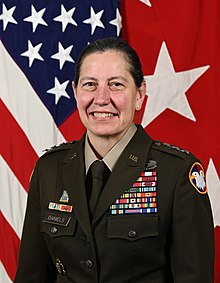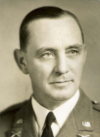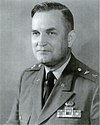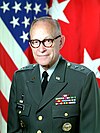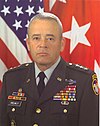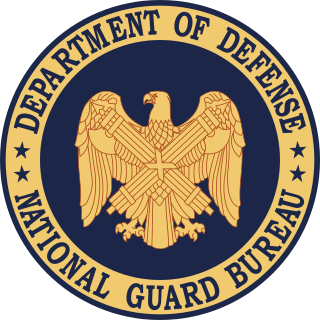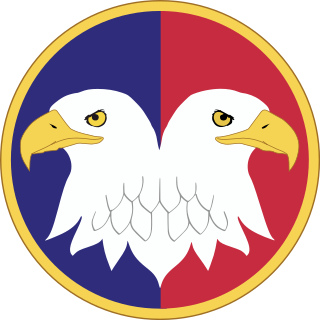| No. | Chief | Term |
|---|
| Portrait | Name | Took office | Left office | Term length |
|---|
| Chief of the Reserve Section, G-2 |
|---|
| 1 | | Thompson, Charles F. Major
Charles F. Thompson
(1882–1954) | 12 June 1923 | 1 July 1923 | 19 days |
| 2 | | Boswell, Walter O.Major
Walter O. Boswell
(1877–1953) | 2 July 1923 | 31 July 1924 | 1 year, 29 days |
| Chief of the Reserve Branch, G-2 |
|---|
| 3 | | Potts, Douglas Colonel
Douglas Potts
(1878–1940) | 1 August 1924 | 30 December 1925 | 1 year, 151 days |
| 4 | | Pegram, John Cargill Lieutenant Colonel
John C. Pegram
(1881–1972) | 31 December 1925 | 14 August 1926 | 226 days |
| 5 | | Ryons, Frederick ButterfieldLieutenant Colonel
Frederick B. Ryons
(1877–1946) | 15 August 1926 | 30 September 1926 | 46 days |
| 6 | | Ford, Stanley HamerColonel
Stanley H. Ford
(1877–1961) | 1 October 1926 | 10 February 1927 | 132 days |
| Executive for Reserve Affairs |
|---|
| 7 | | Stone, David Lamme Jr.Colonel
David L. Stone Jr.
(1876–1959) | 5 March 1927 | 30 June 1930 | 3 years, 117 days |
| 8 | | Herron, Charles Douglas Brigadier General
Charles D. Herron
(1877–1977) | 1 July 1930 | 30 June 1935 | 4 years, 364 days |
| 9 | | Hartshorn, Edwin Simpson Jr.Brigadier General
Edwin S. Hartshorn Sr.
(1874–1963) | 1 July 1935 | 15 September 1938 | 3 years, 76 days |
| 10 | | Thompson, Charles F.Brigadier General
Charles F. Thompson
(1882–1954) | 16 September 1938 | 9 June 1940 | 1 year, 267 days |
| 11 | | Hester, John HutchisonBrigadier General
John H. Hester
(1886–1976) | 21 June 1940 | 23 March 1941 | 275 days |
| Executive for Reserve and ROTC Affairs |
|---|
| - | | Lowe, Frank E.Colonel
Frank E. Lowe
(1885–1968)
Acting | 24 March 1941 | 4 June 1941 | 72 days |
| 12 | | Lowe, Frank EdwardBrigadier General
Frank E. Lowe
(1885–1968) | 5 June 1941 | 10 August 1942 | 1 year, 66 days |
| 13 | | Smith, Edward WhiteBrigadier General
Edward W. Smith
(1894–1966) | 16 September 1942 | 14 October 1945 | 3 years, 28 days |
| 14 | | Bres, Edward S.Brigadier General
Edward S. Bres
(1888–1967) | 15 October 1945 | 30 November 1947 | 2 years, 46 days |
| 15 | | Westover, WendellBrigadier General
Wendell Westover
(1895–1960) | 1 December 1947 | 14 November 1949 | 1 year, 348 days |
| 16 | | Cress, James Bell Major General
James B. Cress
(1889–1967) | 1 January 1950 | 31 January 1951 | 1 year, 30 days |
| 17 | | Milton, Hugh Meglone IIIMajor General
Hugh M. Milton II
(1897–1987) | 24 February 1951 | 18 November 1953 | 2 years, 267 days |
| 18 | | Lindeman, Philip Ferdinand Jr.Major General
Philip F. Lindeman Jr.
(1909–1988) | November 1953 | 6 December 1954 | 1 year, 17 days |
| Chief, Army Reserve and ROTC Affairs |
|---|
| 18 | | Lindeman, Philip Ferdinand Jr.Major General
Philip F. Lindeman Jr.
(1909–1988) | 7 December 1954 | 31 July 1957 | 2 years, 236 days |
| 19 | | Palladino, Ralph A.Major General
Ralph A. Palladino
(1904–1981) | 1 August 1957 | 31 May 1959 | 1 year, 303 days |
| 20 | | Warren, Frederick M.Major General
Frederick M. Warren
(1903–1986) | 1 September 1959 | 12 February 1963 | 3 years, 164 days |
| Chief, Army Reserve |
|---|
| 20 | | Warren, Frederick M.Major General
Frederick M. Warren
(1903–1986) | 13 February 1963 | 31 August 1963 | 199 days |
| 21 | | Sutton, William J.Major General
William J. Sutton
(1908–1972) | 1 September 1963 | 31 May 1971 | 7 years, 272 days |
| 22 | | Roberts, James Milnor Jr.Major General
J. Milnor Roberts Jr.
(1918–2009) | 1 June 1971 | 31 May 1975 | 3 years, 364 days |
| 23 | | Mohr, HenryMajor General
Henry Mohr
(1919–1997) | 1 June 1975 | 31 May 1979 | 3 years, 364 days |
| 24 | | Berkman, William R.Major General
William R. Berkman
(1929–2014) | 1 June 1979 | 31 July 1986 | 7 years, 60 days |
| - | | Mott, Harry James IIIBrigadier General
Harry J. Mott III
(1929–2023)
Acting | 1 August 1986 | 30 November 1986 | 121 days |
| 25 | | Ward, William Francis Jr.Major General
William F. Ward Jr.
(1928–2018) | 1 December 1986 | 1 October 1990 | 3 years, 304 days |
| Chief, Army Reserve and Commanding General, U.S. Army Reserve Command |
|---|
| 25 | | Ward, William Francis Jr.Major General
William F. Ward Jr.
(1928–2018) | 1 October 1990 | 31 July 1991 | 303 days |
| 26 | | Sandler, Roger WarrenMajor General
Roger W. Sandler
(born 1934) | 1 August 1991 | 31 January 1994 | 2 years, 183 days |
| 27 | | Baratz, MaxMajor General
Max Baratz
(born 1934) | 1 February 1994 | 24 May 1998 | 4 years, 112 days |
| 28 | | Plewes, Thomas Jeffrey Lieutenant General
Thomas J. Plewes
(born 1940) | 25 May 1998 | 24 May 2002 | 3 years, 364 days |
| 29 | | Helmly, James RonaldLieutenant General
James R. Helmly
(born 1947) | 25 May 2002 | 25 May 2006 | 4 years, 0 days |
| 30 | | Stultz, Jack C. Jr.Lieutenant General
Jack C. Stultz Jr.
(born 1952) | 25 May 2006 | 9 June 2012 | 6 years, 15 days |
| 31 | | Talley, Jeffrey W.Lieutenant General
Jeffrey W. Talley
(born 1959) | 9 June 2012 | 1 June 2016 | 4 years, 22 days |
| - | | Conboy, David J.Major General
David J. Conboy
(born 1961)
Acting | 1 June 2016 | 30 June 2016 | 29 days |
| 32 | | Luckey, Charles DanaLieutenant General
Charles D. Luckey
(born 1955) | 30 June 2016 | 2 July 2020 | 4 years, 2 days |
| - | | Roper, A.C. Jr.Major General
A. C. Roper Jr.
(born 1963)
Acting | 3 July 2020 | 28 July 2020 | 25 days |
| 33 | | Daniels, Jody J.Lieutenant General
Jody J. Daniels
(born c. 1962) | 28 July 2020 | Incumbent | 2 years, 364 days |


